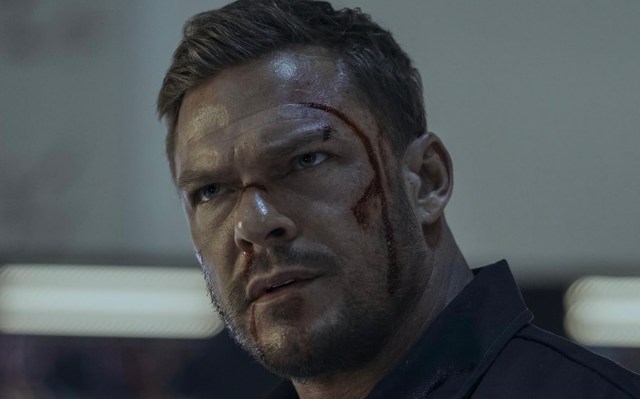Prime Video’s Reacher, starring Alan Ritchson as the former military man and current heroic drifter with just a toothbrush to his name, broke records for the streaming giant in 2023. As per Deadline, Season 2 of the show pulverized its competitors into submission, as it became Prime Video’s top title of 2023, even if it was only released midway through December. Both the character and series look to the past for inspiration, particularly in ’80s action cinema. It was a time when names like Stallone, Schwarzenegger, and Van Damme immortalized themselves as hulking gods of fisticuffs among mere men. A time when these stories’ plots had more holes than Swiss cheese and cinephiles rolled their eyes at the flimsy excuses for life-changing violence. However, no one could dispute the winning formula of likable heroes, heinous bad guys, and big dumb fun all around.
Connective tissue Is overrated
Part of the appeal of Lee Child’s Reacher novels is that they don’t need to be read in any specific order. A reader can jump around and immerse themselves in whichever story they choose since there is no real continuity from book to book. The same holds true for the Prime Video series, as the connective tissue between seasons is barely dangling by a thread and viewers can press play on Season 2 without prior context of what happened before. In fact, the first season of Reacher is based on the author’s first novel, Killing Floor, while the second is inspired by the eleventh book, Bad Luck and Trouble.
Child explained to RadioTimes.com how this has always been a deliberate choice as he wants readers and viewers to be able to jump on at any point. “Reacher as a character is interested in today only,” Child said, “[he] doesn’t care about yesterday, doesn’t care about tomorrow, so each book stands alone, which gave us the flexibility to really choose whatever book we wanted to use for any of the particular seasons.”
Modern-day storytelling in film and television holds an unhealthy obsession with shared universes and connectivity that span multiple timelines and properties. Creators force the audience to spend a bulk of their viewing time trying to link characters and allusions to other callbacks rather than watching (and enjoying) what’s in front of them. Look at the Marvel Cinematic Universe as a prime example —each show or film contains something essential to understanding future and past projects, and everything’s meant to be a block to build something bigger. Unsurprisingly, fatigue creeps in as the universe expands and becomes more convoluted than before.

In the ’80s, action movies scoffed at the very idea of this. Does anyone remember how American Ninja and American Ninja II: The Confrontation are linked besides featuring both Michael Dudikoff’s Joe Armstrong and Steve James’s Curtis Jackson? Or what about those strange sequels where David Bradley’s character randomly changed his name from Sean Davidson to Joe Kastle without explanation? Of course not, but the audience expects that ninjas will receive a whooping in each film and the filmmakers deliver on that promise. Similarly, Reacher doesn’t obsess over stretching out a shared universe or kickstarting multiple spin-offs. The show focuses on the right here, right now – not the later – and this is ultimately beneficial to the audience in the long run as they get the full story experience rather than fragments of it.
Reacher is about as subtle as a hammer to the head
In the last scene of Reacher Season 2, episode four, titled “A Night at the Symphony,” the villainous Shane Langston (Robert Patrick) speaks to the walking brickhouse of muscle known as Reacher on the phone. Langston tries to cut a deal, saying, “I have the means to give you anything you could ask for. What is it that you want?” The hero takes a pause and then replies, “I want to throw you out of a helicopter.”
It’s not exactly dialogue from the Aaron Sorkin School of Screenwriting, but it’s highly effective and encapsulates what Reacher is in a nutshell. The character is a blunt instrument of force who punches first and asks questions later. Naturally, this lands him in hot water more often than not, but who can debate his methods when they bring results?
Action movies from the ’80s employed a similar approach to the exchanges between protagonists and antagonists, which resulted in an abundance of iconic quotes and quippy one-liners. Think of Cobra for a second. Arguably, its most infamous quote is when Sylvester Stallone’s Marion Cobretti proclaims, “You’re a disease, and I’m the cure” – but what does that even mean? Who cares? It’s a simple means of communicating a message that the character needs to get across to others in the story and those watching at home. (Plus, not everything needs to be a poetic “tears in rain” monologue when a simple “yippee-ki-yay” is equally effective.) And much like these heroes from yesteryear, Reacher has excelled in mastering the art of simple communication and proving he’s here to chew bubblegum and kick ass…and he’s all out of bubblegum.
From the story arcs to the dialogue, there’s an accessible nature to Reacher that connects with a variety of audiences. The show doesn’t get lost in trying to be too smart or more than what it is. It possesses an acute self-awareness, choosing to remain true to entertainment value alone. It’s enthralling rather than eclectic. More importantly, it’s proof that meathead mayhem never dies and is alive and well in the 21st century.


0 Commentaires